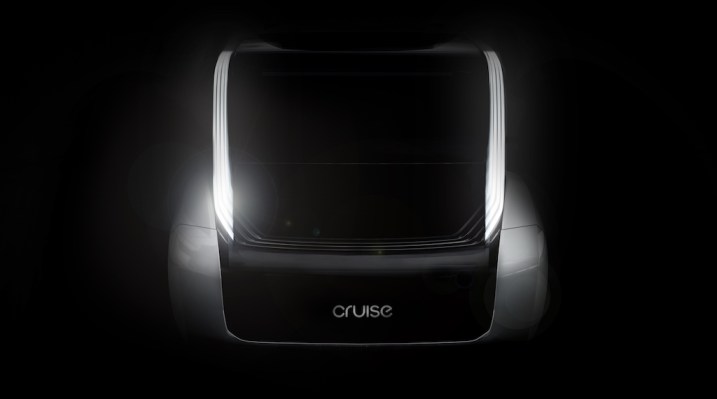Honda will commit $2.75 billion as part of an exclusive agreement with GM and its self-driving technology subsidiary Cruise to develop and produce a new kind of autonomous vehicle.
As part of the agreement, Honda will invest $2 billion into the effort over the next 12 years. Honda also is making an immediate and direct equity investment of $750 million into Cruise, which pushes the company’s valuation up to $14.6 billion. Honda’s investment gives the automaker a 5.7 percent stake in Cruise.
The milestone agreement follows the giant $2.25 billion investment made by SoftBank’s vision fund in May.
This new autonomous vehicle, described by GM president Dan Ammann as the “next evolution in the future of transportation,” will be produced at high volume for global deployment.
Cruise founder and CEO Kyle Vogt didn’t elaborate what this next-generation autonomous vehicle might look like. But during a call with TechCrunch on Wednesday he used words like “innovative,” “space-efficient” and “multi-purpose.” He also noted Honda’s expertise in space-efficient design.
“When you have the chance to design a vehicle from the ground up, we’re not limited to thinking from the perspective of, OK there’s an autonomous vehicle that looks and feels like an existing vehicle, what can we do with it?” Vogt said. “It lets us invert the problem and think from first principles of what we can do with a vehicle that’s built from scratch.”
In other words, don’t expect it to look like a Chevy Bolt, or any other “car-like” vehicle.
What was clear during TechCrunch’s interview with Vogt was a sense of urgency to deploy autonomous vehicles, including this next-generation one, as soon as it’s safe and possible.
“Our intent is to go pretty quickly on this as we have with everything else,” Vogt said. “I would not look to the 12 years (length of the Honda-GM agreement) as an indication of when our next vehicle may become available.”
GM Cruise plans to launch a commercial autonomous ride-hailing service in 2019. The company has not officially said where it will first launch. All signs suggest it will be San Francisco, where Cruise is headquartered and constantly testing its autonomous Chevy Bolts on public roads.
The three companies plan to “explore global opportunities for commercial deployment of the Cruise network.”
“This is the logical next step in General Motors and Honda’s relationship, given our joint work on electric vehicles, and our close integration with Cruise,” GM chairman and CEO Mary Barra said in a statement. “Together, we can provide Cruise with the world’s best design, engineering and manufacturing expertise, and global reach to establish them as the leader in autonomous vehicle technology — while they move to deploy self-driving vehicles at scale.”
GM and Honda, which already have a joint venture to produce hydrogen fuel cell systems by 2020, recently deepened their relationship, this time around electric vehicle batteries. The automakers announced in June 2018 an agreement for Honda to use battery cells and modules from GM in electric vehicles built for the North American market.
This is not Honda’s first liaison with an autonomous vehicle technology company, albeit this tie up with Cruise involves money and a formal agreement.
Waymo, the former Google self-driving project that spun out to become a business under Alphabet, and Honda were working together in late 2016. At the time, the companies described it as a technical collaboration to learn about how to best integrate Waymo’s self-driving sensors, software, and computing platform into Honda vehicles. It was not a formal agreement.
It’s not clear if the Honda-Waymo collaboration is active. Honda Executive Vice President and
Representative Director COO Seiji Kuraishi, who was on a press call Wednesday, wouldn’t comment about Waymo, instead preferring to focus on the deal with GM Cruise.
